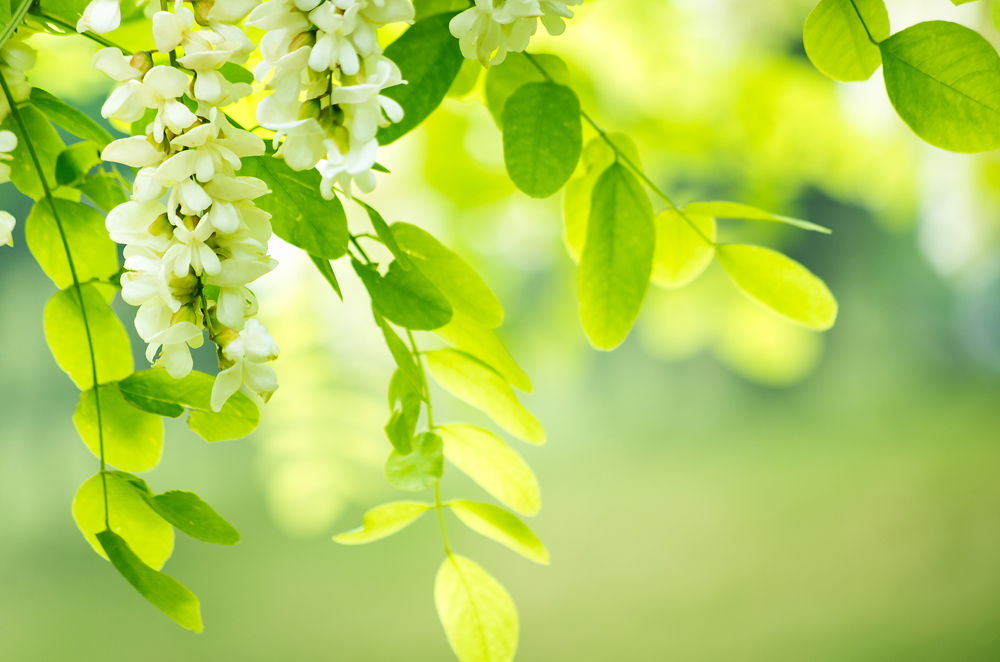Acacia sp.
Common names:

General Information:
This tall, semi-evergreen, native shrub or small tree has feathery, finely divided leaflets of a soft, medium green color. The slightly rough stems are a rich chocolate brown or grey, possessing long, sharp, multiple thorns. The small, yellow, puff-like flowers are very fragrant and appear in clusters in late winter then sporadically after each new flush of growth, providing nearly year-round bloom. The persistent fruits have a glossy coat and contain seeds which are cherished by birds and other wildlife.
Acacias are sometimes called wattles or golden mimosa. Lesniewicz says that the term mimosa applied to acacia is mistaken; Ainsworth labels his acacia a mimosa. Most acacias will bear golden flowers followed by legume pods, but getting acacia to flower in bonsai culture is reputedly difficult. They have compound leaves, are well-branched, and have nasty thorns.
Family:
Leguminosae
Lighting:
Acacias prefer full sun.
Temperature:
Acacias are warm weather trees. They must be wintered indoors, although they generally like it somewhat cool — under 64 degrees Fahrenheit.
Watering:
Acacia prefer moderate to slightly dry conditions; allow the soil to dry between waterings. However, the leaves will drop if the soil is allowed to get too dry. Simon and Shuster’s recommends daily misting.
Feeding:
Every 15-20 days during the growth period. Use a standard bonsai fertilizer, or a low nitrogen fertilizer to encourage flowering.
Pruning and wiring:
Wiring can be done from spring to autumn, every other year. Use caution when wiring, as the branches can be delicate. Acacias can become leggy quickly, and tend towards top growth at the expense of lower branches, which sometimes die back. It’s essential, therefore, to keep up with constant minor pruning. Acacias have compound leaves, so leaf pruning is futile.
Propagation:
Seed or cuttings. Cuttings should be taken in summer and supplied with bottom warmth and rooting hormone. Propagation from seeds seems a better bet, as acacias germinate in high numbers. The seeds do need some special treatment, however, due to their hard shells. Nick the bottom ends of the seeds with a knife or pair of clippers, then place the seeds in a bath of hot (not boiling) water. Allow them to soak for two days, then sow.
Repotting:
Every 2-4 years, depending on the age and vigour of the tree. Use a fast-draining soil mix, low in organic material. Reduce top growth in proportion to roots that have been pruned. Best to repot before acclimating the tree to warmer weather. They are easy to grow in any acid or alkaline soil.
Pests and diseases:
Aphids, flies, thrips, mites etc., also hard shelled insects like scale and woolly aphids. Occasionally anthracnose can infect leaves.
The following acacias are recommended for bonsai:
Acacia baileyana: Cootamundra wattle, golden mimosa very well suited to bonsai because of its small size: Gustafson recommends this acacia in particular for miniature bonsai. Likes cooler temperatures during the winter: 46 to 53 degrees Fahrenheit.
Acacia cavenia
Acacia choriophylla: tamarindillo, small tree, no spines In U.S. found only in the [Florida] Keys. Endangered, but may be available in S. Florida nurseries.
Acacia dealbata: silver wattle, mimosa, native to Tasmania and Australia, zones 8-10. It has silvery-grey foliage and can grow up to 60 feet in the wild. A popular florist’s shop offering.
Acacia farnesiana: golden mimosa, popinac, sweet acacia, perfume acacia, apparently, a very lovely smelling tree, used in the manufacture of perfume. Also quite small, it will gr ow to only 10 feet in the wild, with leaflets only 1/8 inch long. Better adapted to warm temperatures during the winter than A. baileyana, it is native to warm regions of America, zones 8-10.
Acacia karroo
Acacia pinetorium: pine acacia, small, sprawling shrub/tree with 1 cm paired spines. Common in pinelands scrub, Lee County south, in Florida.
Acacia smallii: Small’s acacia, Texas huisache, Shrub to 5 meters armed with pairs of VERY SHARP spines at the base of the leaves. It blooms from December-March with bright golden blossoms. In the wild they tend to be multi-trunk and about 15-20’ tall. It is found in Florida in the extreme western panhandle (Near Pensacola) and in Texas, so it may be in Alabama, Mississippi and Louisiana.
Acacia spectablis
Acacia tortuosa: Twisted acacia, shrub to small, spiny tree with zigzag branches. Common on shell mounds and along roadsides, S. Florida.
Acacia verticillata
Acacia wrightii: Wright’s acacia, Wright’s catclaw, uno de gato. The compound leaflets are smaller than the huisache and fold up at night (or during the day if it needs water) . As you might guess, the tree gets the catclaw name for its recurved spines. Found native in Texas, this acacia is reputed to be very vigorous, with plenty of back-budding.
Bibliography:
Simon and Schuster Guide to Bonsai
Bonsai in Your Home by Lesniewicz
Miniature Bonsai by Gustafson
The Art of Indoor Bonsai by Ainsworth
USDA Fact Sheet ST-5
Compiled by Sabrina Caine
Edited by Michael Johnson and Thomas L. Zane
